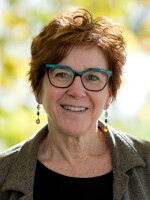St. Louis-area artist was devastated when a very personal piece of his work was removed from an exhibition. But did that action rise to the level of censorship?
The idea of reacting to public outcry against a work of art captured the conversation in St. Louis last fall after community advocates demanded that the Contemporary Art Museum . Since then, two Washington, D.C., incidents with local connections, have kept a spotlight on the subject. One involved , the other, the removed from a U.S. Capitol hallway.
In our latest, we explore issues of censorship with Rodriguez and Washington University art history professor Angela Miller.
HereтАЩs some of what youтАЩll hear in the podcast:
- Miller, on the definition of censorship: "[When an institution uses its authority] to essentially remove free speech ... and the possibilities for discussion."
- Rodriguez, on having his piece depicting protesters in the Dominican Republic removed from a traveling exhibition: "It tells me that my people are not important, that I donтАЩt matter; my people donтАЩt matter. And thatтАЩs when I take it personal.тАЭ
- Rodriguez, on how a local teen's painting about the African-American community and police was removed from the U.S. Capitol but a controversial work at the Contemporary Art Museum was left up and walled off: "Kelley Walker gets a wall built to protect his artwork. This kid gets it put down four times; what does that show that kid?"

Look for new every few weeks on our website. You can also view all previous podcasts focusing on a diverse collection of visual and performing artists, and subscribe to Cut & Paste
The show is sponsored by .
Follow Willis and Nancy on Twitter: and
Please help ┬й 2024 ═т═Ї╠ь╠├ find artists to feature on Cut & Paste.







